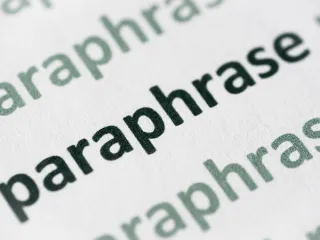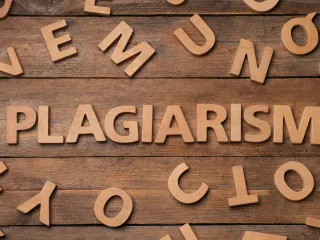Two terms often come to the fore when researching and writing: reference list and bibliography. The difference between the bibliography and references may appear minimal.
However, they serve distinct purposes. A reference list comprises items specifically supporting ideas referred to and cited within the main body of a paper. In contrast, a bibliography collects all works consulted during the research process, whether directly quoted or not.
While the reference list vs. bibliography debate is subtle, understanding these terms is crucial for students, teachers, and literature professionals.
Differences: Reference Lists vs Bibliographies
Reference lists and bibliographies play pivotal roles in academic and professional writing. However, distinguishing between them is essential to maintain the integrity of one’s work and adequately credit sources. Here’s a breakdown of their fundamental differences:
Nature of Listing:
Reference List: Comprises sources that are directly cited within the content.
Bibliography: Encompasses all the sources referred to during the research, regardless of whether they are cited in the text.
Purpose:
Reference List: Ensures readers can locate the sources of information and ideas mentioned in the paper.
Bibliography: Offers readers an overview of the breadth and depth of the research conducted, including sources that may provide further reading.
Location:
Reference List: Appears at the end of the paper, following any in-text citations.
Bibliography: Typically found at the end of the document, sometimes with an accompanying annotation, known as an annotated bibliography.
Citation Style:
Reference List: Often follows specific citation styles such as APA (American Psychological Association), which has guidelines for listing references.
Bibliography: While it can also adhere to styles like APA, the listing may be more comprehensive, including works that don’t strictly adhere to a specific style guide.
Use Cases:
Reference List: Common in research papers, journal articles, and other academic writings where direct citations are made.
Bibliography: Often used in broader research projects, thesis work, or books where the author wants to showcase their research journey.
When conducting academic or professional research, understanding the distinction between a bibliography and references is crucial. It’s not merely a matter of semantics, but of ensuring appropriate credit, demonstrating the breadth of research, and offering readers avenues to further explore subjects.
Whether following the APA style for citations, arranging an alphabetical list of sources, or compiling a comprehensive list in Harvard’s author-date system, the difference between a bibliography vs. endnotes or referencing remains integral to accountable, clear, and impactful writing.
Examples of Reference Lists and Bibliographies
Both reference lists and bibliographies are essential components of academic and research writing. They ensure the writer properly credits the sources they consulted or cited, allowing readers to explore the subject further.
The format for each varies based on the citation style. Here, we’ll explore examples in the APA (American Psychological Association) style.
Reference List: APA Style
A reference list in APA style comprises all the sources directly cited within the paper’s content. It’s important to note that every in-text citation must have a corresponding complete reference in the reference list. Here’s a brief example:
Smith, J. (2019). The Impacts of Climate Change on Marine Life. Environmental Journal, 45(2), 23-45.
Miller, L., & Brown, R. (2020). Solar Energy: Future Prospects. Renewable Resources, 12(5), 15-29.
Green Technologies. (2018). Advancements in Renewable Energy.
When citing a research paper, especially in multiple styles, using a guide like the one provided by us can be especially helpful.
Bibliography: APA Style
In contrast to the reference list, a bibliography in APA style will contain all the sources the writer referred to during their research process, regardless of whether they were directly cited in the main content.
A bibliography might include additional readings or sources that offer more insight into the topic, even if they weren’t explicitly referenced in the paper. Here’s an example:
Smith, J. (2019). The Impacts of Climate Change on Marine Life. Environmental Journal, 45(2), 23-45.
Miller, L., & Brown, R. (2020). Solar Energy: Future Prospects. Renewable Resources, 12(5), 15-29.
Green, A. (2017). The Role of Oceans in Climate Regulation. Oceanography Today, 10(3), 45-58.
Renewable Energy Hub. (2016). The Rise of Wind Energy.
It’s noticeable that while the first two entries appear in the reference list and bibliography, the latter two are unique. They represent additional readings or consulted sources not directly cited in the paper.
Importance of Correct Citation
Maintaining precise citations, whether through the author-date system or referencing a list of references, signifies more than mere avoidance of plagiarism. It demonstrates the depth and thoroughness of the research conducted. In the New York publication manual, FAQs highlight the key differences in citation styles, including how to indent on a reference page.
These tools guide researchers and keen readers in their quest to understand the subject more profoundly.
Furthermore, the format of both lists can vary widely depending on the chosen citation style. The examples above use the APA style, but there are various other styles, such as MLA and Chicago. Each has its unique set of rules regarding citation. Guides like ours provide step-by-step instructions on adhering to each format accurately.
In conclusion, understanding the nuances and adhering to the correct format is essential to create a reference list or a bibliography. They ensure the credibility and authenticity of the work and provide a roadmap for those wishing to explore the topic further.
The Critical Role of Formatting in Citations
Formatting goes beyond mere aesthetics; it’s about ensuring clarity and consistency. When a researcher, student, or reader encounters a web page or literature review, having a systematically formatted works cited page or reference list entry aids comprehension. This is vital, as your piece might serve as the foundational literature for another’s research.
Moreover, correct formatting ensures every detail is in its proper spot. For instance, in the Modern Language Association style, headings are used to separate sections, helping readers identify specific parts of the content. This organized approach allows readers to pinpoint where they can find particular information effortlessly.
Diversifying Sources in Bibliographies
In the world of research, relying solely on one type of source can limit the depth of your analysis. Bibliographies, in particular, provide an excellent opportunity to showcase various sources, from books and peer-reviewed articles to reliable online sources and interviews.
For instance, while *Smith (2019)* might provide a comprehensive study on marine life, a documentary or an expert interview could offer practical insights or real-world observations that complement the data from Smith’s analysis.
By including diverse sources in your bibliography, you enhance the richness of your research and demonstrate a holistic approach to your investigation.
Potential Pitfalls in Creating Reference Lists and Bibliographies
While both reference lists and bibliographies are essential, they come with potential pitfalls that researchers must be wary of:
- Incorrect Ordering: Especially in styles like APA, where alphabetical ordering is crucial, even a slight deviation can lead to mark deduction in academic settings.
- Missing Information: Skipping crucial details like publication dates or page numbers can make it difficult for readers to trace back to the source.
- Inconsistent Formatting: Using multiple citation styles in one document or not adhering to one type consistently can confuse readers.
These pitfalls can be avoided by regularly consulting citation guides, utilizing citation management tools, or referring to platforms like our Citation Generator or specific guidelines on diverse citation styles.
Deciphering the World of Citations
Navigating the intricate details of academic writing and research can be challenging, especially when understanding the nuanced differences between citations. However, understanding the difference between a bibliography and a reference list is paramount.
While a reference list enumerates the sources you directly cited in your paper, a bibliography showcases every source you consulted during your research process.
In today’s digital age, where information is abundant and easily accessible, maintaining the integrity of your research is vital. Avoiding plagiarism is not just about academic honesty; it’s about preserving the research community’s sanctity and recognizing fellow scholars’ hard work.
Accidental plagiarism can happen, and it’s often a result of mismanaged citations or overlooking specific sources. Here at Quetext, our citation generator can be instrumental in ensuring your work is original and gives due credit. It streamlines the process, ensuring every source gets its rightful acknowledgment.
Moreover, familiarizing oneself with the various facets of plagiarism is equally critical. This understanding ensures you don’t unknowingly tread on dangerous grounds. For a deeper dive into recognizing and avoiding plagiarism in your research, visit this comprehensive guide on recognizing and avoiding plagiarism.
In conclusion, while the distinctions between bibliographies and reference lists may seem subtle, they are crucial in academic and professional writing. By mastering these differences and leveraging tools to maintain citation integrity, you fortify your work’s credibility and contribute meaningfully to the vast world of research and knowledge.









